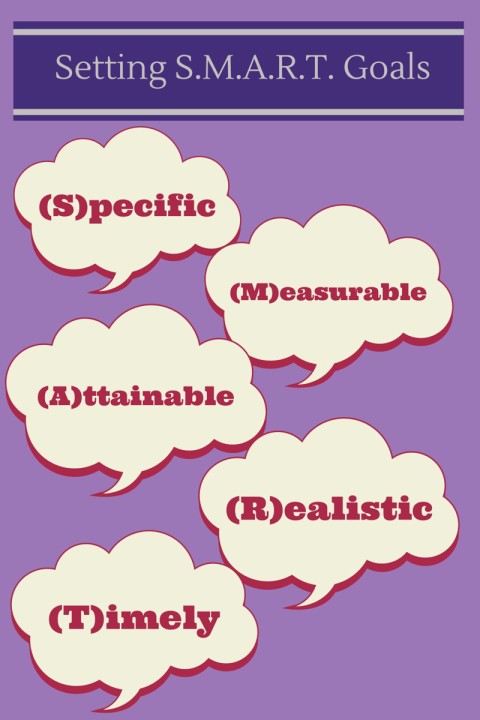Top 10 New Year’s Resolutions
Do any of these sound familiar to you? If you are like most people, you have probably made at least one of these resolutions in the past. If you are like 70% of people who make New Year’s resolutions, you rarely (or never) achieve them. In fact, you may be amongst the 54% of people who give up or forget about their resolutions less than 6 months into the year. The fact is that most people’s resolve to achieve their New Year’s Resolutions weakens over time. Which leads to Year’s End Regrets.
But why is that?
I believe that it has to do with the lack of a plan. You know the saying: “If you fail to plan, you are planning to fail.” I view setting resolutions (or goals) the same way as building a house.
First of all, you need a blueprint. You can’t just say “I want to build a house” and then expect it to magically appear, can you? Well, the same goes for having a goal. It will take more than stating or writing a goal for you to make it happen. You need to write down your long-term goal, break it down into a series of short-term goals, and then plan specific actions that you will need to take each day, week, and month to work towards that goal. I like to think of the long term goal as the house, short term goals as levels of the house, and the specific actions as steps leading you from one level to the next.
Next, you will need to have a solid foundation. For me, that involves having a positive mindset, a determined attitude, and a clear focus on why you need/want to achieve that goal. This also includes your skill set you’re your knowledge base. Without these things, you are much more likely to forget your goal or give up on it. Just as a house built on sand will not last long, goals set without a strong mental foundation will crumble. I sincerely believe that you have to work on yourself just as much as you work on your goals.
You will also need the proper tools. This varies depending on what your goal is. For example, if your goal is to save money, then you will need not only a source of income, but a means by which you will actively save money (such as a savings account). If your goal is to eat healthy, then you will likely need a meal plan and a grocery shopping list. If your goal is to get organized, then you might need to invest in things such as a calendar, a planner, home/office organizational supplies, etc. If you goal is fitness, then you may need exercise equipment, workout videos, supplements, a gym membership, etc. You get the point, right? Think about your goals and what you will need to accomplish them and make sure that you have everything on hand.
Next, you will need work ethic. You can have all of the plans and tools in the world, but those things will be pointless if YOU don’t put them to use. And you have to do that consistently. Inconsistent effort will result in you either taking forever to achieve your goals, or in you not achieving them at all. And lack of action will get you absolutely nowhere. You have to be willing and determined to put in the work to make your goals come to fruition. Otherwise, you will get to the end of the year and wonder why you are no close to achieving your goals than you were at the beginning of the year.
Finally, it helps to have a team of people helping you. Of course, it is possible to achieve your goals on your own. However, I find that we all do better when we have some kind of help. They may not actively help you with your goals, but even having a support system or accountability partners on your side can keep you motivated to move forward. So I always recommend letting other people know about your goals and keep them updated on your progress. That way they can encourage you to keep going when you stumble or backslide. If they can help you to actually achieve your goal, that is even better.
Another goal-setting method that I keep in mind is called the S.M.A.R.T. method.

Specific- As you have seen, it is important that you have goals that are broken down into specifics. The more specific, the easier it will be to actually stick to it. For example, rather than saying “I want to lose weight”, you can say that you want to lose 50 pounds by the end of the year. And to make it even more specific, you can say “I want to lose 4 pounds a month”. To break that one down even further, you can say “I want to lose at least 1 pound each week”, which can be further broken down into “I want to lose at least one pound each week by eating healthy meal options and working out 4 times a week for no less than 30 minutes a day.” Do you see the difference and how much easier it would be to work towards the last goal?
Measurable- Your goal should also be something that you can actually measure. Basically, how will you be able to track your progress and when will you know you have reached your goal?As you can see in the previous section, I made the goal measurable by clearly stating that the goal is to lose 1 pound a week, which would add up to the long-term goal of 50 pounds by the end of the year. This is easily measurable by stepping on a scale. The same thing applies to other goals. For example, if your goal is to save money, you can measure your progress via a savings account. If your goal is to be more organized, you can measure your progress by keeping a to-do list and marking off the tasks that you accomplish. For every goal you set, determine a way that you can track your progress.
Attainable- When a goal is attainable, that means that you have the attitude, ability, skills, knowledge, and tools to achieve it. Setting goals that you are not equipped to achieve will likely result in failure. This does not mean that you should not set the goals you have your heart set on. What it does mean is that you may have to push yourself to grow and develop in order to attain these goals.
Realistic- On a related note, you have to have realistic goals. For example, it would not be realistic to want to lose 50 pounds in a month. Barring some kind of extreme surgery, this is not going to happen. You want your goals to be realistic, not only because you will be more likely to achieve realistic goals, but because having unrealistic goals can cause you to become frustrated. Imagine if your goal was to lose 50 pounds in a month and you worked really hard to achieve it, and failed. Even if you lose 10 pounds (which is more realistic), you may think to yourself “But it isn’t 50 pounds” and give up. By having realistic expectations from the beginning, you are better able to stay motivated.
Timely- Finally, you need to have a deadline associated with your goals. It is not enough to say “I want to lose weight”. You need to have a specific time frame in mind for losing that weight. For example, do you need to lose it in time for a certain event? Maybe you want to lose it in time for summer. Or maybe you want to lose it by the end of the year. The simple addition of a deadline can create a sense of urgency that will push you to action.
As you can see, there is more to goal-setting than making a general declaration of what you want to happen. You have to know exactly what you are pursuing, have it broken down into short-term goals, have a specific list of actions that you need to take to work towards your goal, and actively work on it in a way that is consistent and measurable. If you follow these tips, I am sure that you will find that achieving your goals for this year will be more fruitful than the years where you just flew by the seat of your pants.
Now tell me, what are your goals for this year? I’d love to hear what you ladies (and gents) have planned for 2015. Please let us know in the comments below.
 Tiffany Hathorn has been blogging since the summer of 2010. She got started as a way to document her pregnancy and her life as a first-time mother. Since then, her blog has transformed into a chronicle of her life as a single WAHM. She blogs about raising her son solo, working from home, and her journey as a homeschooling mom. If you would like to follow Tiffany, you may do so by subscribing to her blog or liking her fan page.
Tiffany Hathorn has been blogging since the summer of 2010. She got started as a way to document her pregnancy and her life as a first-time mother. Since then, her blog has transformed into a chronicle of her life as a single WAHM. She blogs about raising her son solo, working from home, and her journey as a homeschooling mom. If you would like to follow Tiffany, you may do so by subscribing to her blog or liking her fan page.

Good post, Tiffany. Happy New Year!
Love the “SMART” method!